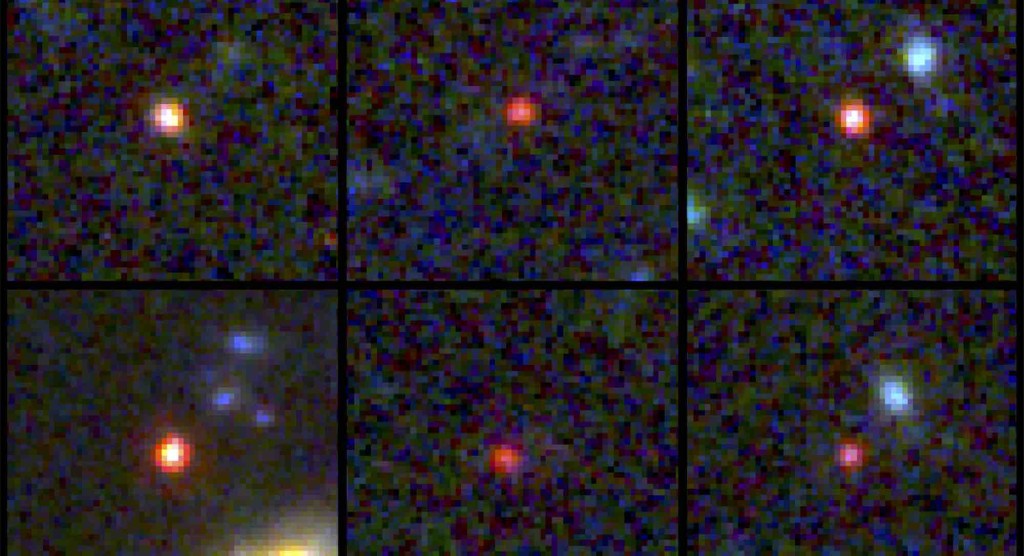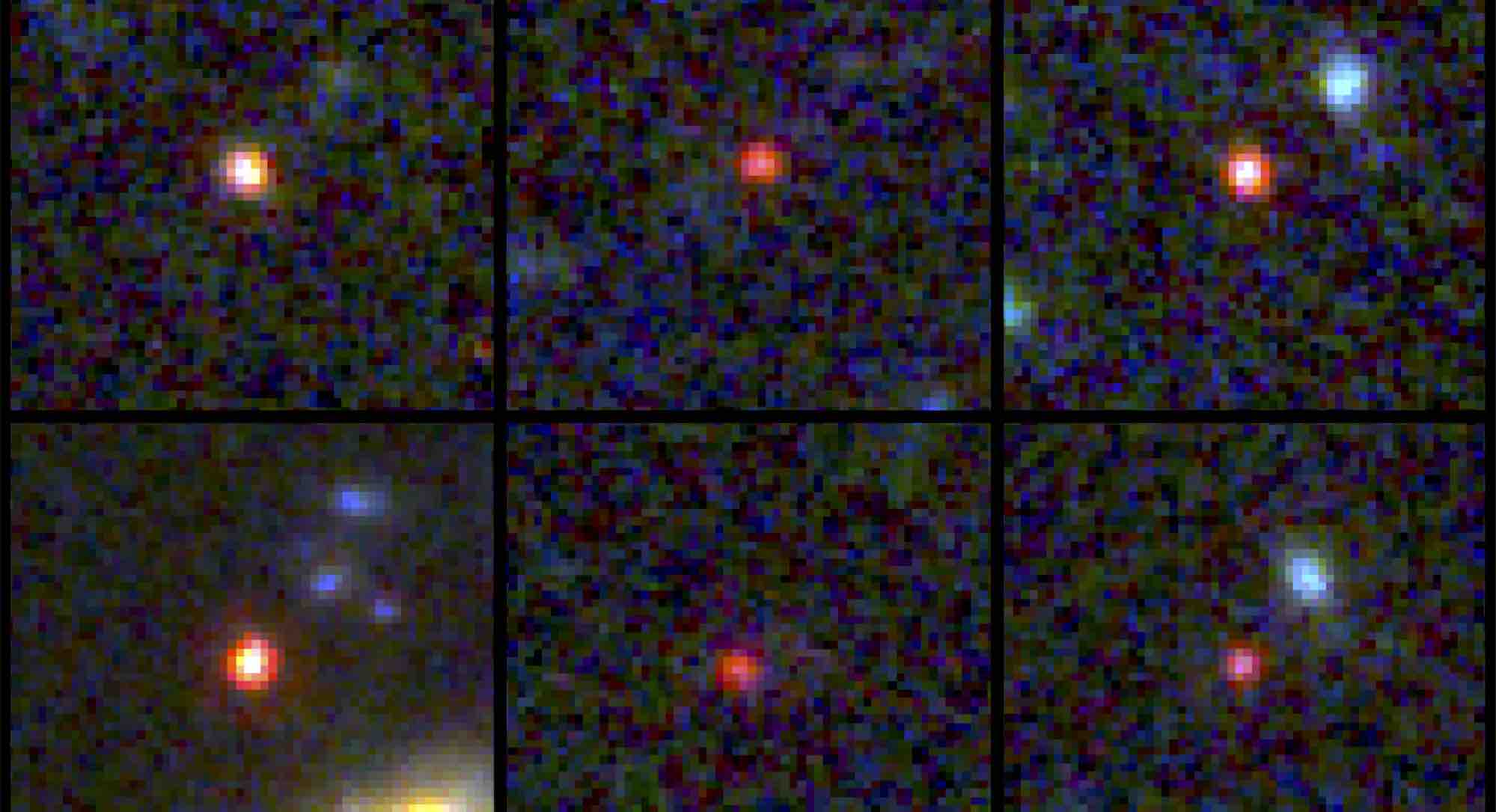
Six enormous galaxies that formed just half a billion years after the Big Bang have been detected by astronomers.
They contain some of the first stars that lit up the cosmos, but the really cool part is that they’re much bigger than anyone thought was possible.
The precise-ish date is about 13 billion years ago. One of the six is believed to have as many stars as the present-day Milky Way but in a space 30 times more compact.
“We expected only to find tiny, young, baby galaxies at this point in time,” said co-author Dr. Joel Leja, of Penn State University, who wielded the James Webb Space Telescope’s unparalleled reach and clarity to make the discovery.
“But we have discovered galaxies as mature as our own in what was previously understood to be the dawn of the universe.”
The first dataset from NASA’s JWST reveals objects just as mature as ours formed 500 to 700 million years after the Big Bang when the universe was only three percent of its current age.
The telescope is equipped with infrared-sensing instruments capable of detecting light emitted by the most ancient stars and galaxies.
“This is our first glimpse back this far so it’s important we keep an open mind about what we are seeing,” adds Dr. Leja. “While the data indicates they are likely galaxies I think there is a real possibility a few of these objects turn out to be obscured supermassive black holes.”
“Regardless, the amount of mass we discovered means the known mass in stars at this period of our universe is up to 100 times greater than we had previously thought. Even if we cut the sample in half, this is still an astounding change.”
“We’ve been informally calling these objects ‘universe breakers’ and they have been living up to their name so far,” he said.
MORE ASTRONOMY NEWS: Astronomers Observe 2 Neutron Stars Colliding and the Extreme Reaction ‘Defies All Expectations’
The study in Nature has implications for current computer simulations used in cosmology and represents one of the key findings Webb was designed to make—finding the earliest matter in the universe.
Such a high amount of mass would require altering models or revising the idea galaxies started as small clouds of stars and dust that gradually grew larger.
MORE FROM JAMES WEBB: Most Distant Stars in Milky Way Detected by Astronomers
Either scenario needs a fundamental shift in our understanding of how the universe came to be.
“When we got the data, everyone just started diving in and these massive things popped out really fast,” said Dr. Leja. “We started doing the modeling and tried to figure out what they were because they were so big and bright. My first thought was we had made a mistake and we would just find it and move on with our lives. But we have yet to find that mistake, despite a lot of trying.”
MORE FROM JAMES WEBB: Galaxy Twinkling with Universe’s Oldest Stars Discovered by Astronomers
It’s hoped that another of JWST’s instruments, a spectrographic camera, will provide accurate distances and identify gases and other elements to create a clearer picture, which a spectrograph can do by analyzing the color spectrum of observed light. Scientists can then look at the color differences and identify the various elements that compose it.
“We’ve found something we never thought to ask the universe and it happened way faster than I thought—but here we are,” said Dr. Leja.
SHARE This Long-Dreamed Of Discovery With Your Friends…




















